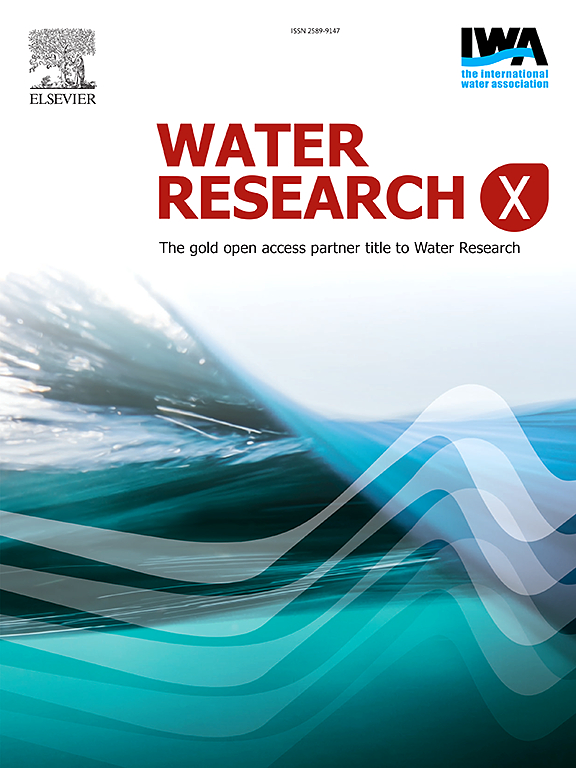Advanced Non-Sewered sanitation system for onsite water recycling in a South African informal settlement
IF 8.2
2区 环境科学与生态学
Q1 ENGINEERING, ENVIRONMENTAL
引用次数: 0
Abstract
Non-sewered sanitation systems (NSSS) are treatment solutions for complex, high-density urban environments in developing countries. Through advanced treatment, NSSS can provide onsite water recycling to enable water-based sanitation in regions with limited water supply. This study presents the outcomes of a three-month field trial of the NEWgenerator (NG) in a South African informal settlement. During the field trial, the NG treated high-strength blackwater from a community facility and recycled the product water for toilet flushing. Throughout the trial, the NG consistently met local recycled water standards for pH, COD, TSS, turbidity, residual chlorine, and Escherichia coli. Additionally, total nitrogen levels were reduced by 97 %, surpassing the recently developed ISO 30500 standard. Through water recycling, the NG offset municipal water demand for toilet flushing. However, a high leakage rate resulted in elevated toilet flush water demand. Approximately 78 % of the flush water demand was wasted due to leaks, which also reduced the NG's ability to offset the total flush water demand. If demand reduction measures were conducted, such as leak repairs and the installation of water-efficient toilets, the NG could meet the entire flush water demand, thus achieving a closed-loop water system. No significant ion accumulation was observed during this water recycling trial. However, a simulation of ion accumulation indicates that in a closed-loop system, periodic water replacement is necessary to maintain the nutrient removal efficiency of the NG. Overall, the NG successfully treated high-strength blackwater in an informal settlement for recycling and contributed to reducing potable water usage for sanitation.

先进的无下水道卫生系统,用于南非非正式定居点的现场水回收
无下水道卫生系统(NSSS)是发展中国家复杂、高密度城市环境的处理解决方案。通过高级处理,NSSS可以提供现场水循环,以实现供水有限地区的水基卫生设施。本研究介绍了在南非一个非正式定居点对新发电机(NG)进行为期三个月的实地试验的结果。在实地试验期间,NG处理了来自社区设施的高强度黑水,并回收了产品水用于冲厕所。在整个试验过程中,NG始终符合当地循环水的pH值、COD、TSS、浊度、余氯和大肠杆菌标准。此外,总氮含量降低了97%,超过了最近制定的ISO 30500标准。通过水循环利用,NG抵消了冲厕所的市政用水需求。然而,高泄漏率导致厕所冲水需求上升。大约78%的冲水需求由于泄漏而被浪费,这也降低了NG抵消总冲水需求的能力。如果采取减少用水需求的措施,例如修补漏水及安装节水厕所,水喉便可满足全部冲水需求,从而形成一个闭环供水系统。在这个水循环试验中没有观察到明显的离子积累。然而,对离子积累的模拟表明,在闭环系统中,定期换水是维持NG去除营养物质效率的必要条件。总的来说,NG成功地在一个非正式定居点处理了高强度黑水进行回收,并有助于减少卫生用水。
本文章由计算机程序翻译,如有差异,请以英文原文为准。
求助全文
约1分钟内获得全文
求助全文
来源期刊

Water Research X
Environmental Science-Water Science and Technology
CiteScore
12.30
自引率
1.30%
发文量
19
期刊介绍:
Water Research X is a sister journal of Water Research, which follows a Gold Open Access model. It focuses on publishing concise, letter-style research papers, visionary perspectives and editorials, as well as mini-reviews on emerging topics. The Journal invites contributions from researchers worldwide on various aspects of the science and technology related to the human impact on the water cycle, water quality, and its global management.
 求助内容:
求助内容: 应助结果提醒方式:
应助结果提醒方式:


